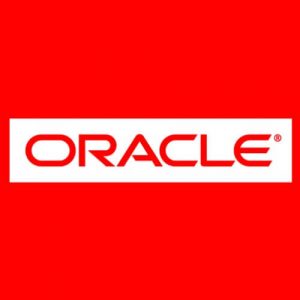MySQL for Database Administrators Ed 4.
565150 Ft – 571500 Ft
Tisztelt Érdeklődő!
Jelenleg a tanfolyamnak nincs konkrét időpontja. Amennyiben érdeklődőként regisztrálja magát, elősegíti
a tanfolyam mielőbbi megszervezését.
Várjuk jelentkezését!
Leírás
Óraszám: 5 nap; 40 tanóra
Minimum létszám: 8 fő
A képzés nyelve: magyar
Tandíj: 203.616 Ft /fő + ÁFA
A képzés rövid leírása:
Megismeri a MySQL szerver installálását és konfigurálását, a másodpéldányok set upját, adatbázis back-upok készítését, a teljesítményhangolást és a legfontosabb biztonsági műveleteket. Megérti, hogy a MySQL hogyan segítheti a teljesítmény növekedését, a skálázhatóságot, a megbízhatóságot és a menedzselhetőséget webes, felhő vagy beágyazott környezetben egyaránt.
Képzési tematika:
Introduction
- MySQL Overview, Products, Services
- MySQL Services and Support
- Supported Operating Services
- MySQL Certification Program
- Training Curriculum Paths
- MySQL Documentation Resources
MySQL Architecture
- The client/server model
- Communication protocols
- The SQL Layer
- The Storage Layer
- How the server supports storage engines
- How MySQL uses memory and disk space
- The MySQL plug-in interface
System Administration
- Choosing between types of MySQL distributions
- Installing the MySQL Server
- The MySQL Server installation file structure
- Starting and stopping the MySQL server
- Upgrading MySQL
- Running multiple MySQL servers on a single host
Server Configuration
- MySQL server configuration options
- System variables
- SQL Modes
- Available log files
- Binary logging
Clients and Tools
- Available clients for administrative tasks
- MySQL administrative clients
- The mysql command-line client
- The mysqladmin command-line client
- The MySQL Workbench graphical client
- MySQL tools
- Available APIs (drivers and connectors)
Data Types
- Major categories of data types
- Meaning of NULL
- Column attributes
- Character set usage with data types
- Choosing an appropriate data type
Obtaining Metadata
- Available metadata access methods
- Structure of INFORMATION_SCHEMA
- Using the available commands to view metadata
- Differences between SHOW statements and INFORMATION_SCHEMA tables
- The mysqlshow client program
- Using INFORMATION_SCHEMA queries to create shell commands and SQL statements
Transactions and Locking
- Using transaction control statement to run multiple SQL statements concurrently
- The ACID properties of transactions
- Transaction isolation levels
- Using locking to protect transactions
Storage Engines
- Storage engines in MySQL
- InnoDB storage engine
- InnoDB system and file-per-table tablespaces
- NoSQL and the Memcached API
- Configuring tablespaces efficiently
- Using foreign keys to attain referential integrity
- InnoDB locking
- Features of available storage engines
Partitioning
- Partitioning and its use in MySQL
- Reasons for using partitioning
- Types of partitioning
- Creating partitioned tables
- Subpartitioning
- Obtaining partition metadata
- Modifying partitions to improve performance
- Storage Engine Support of Partitioning
User Management
- Requirements for user authentication
- Using SHOW PROCESSLIST to show which threads are running
- Creating, modifying and dropping user accounts
- Alternative authentication plugins
- Requirements for user authorization
- Levels of access privileges for users
- Types of privileges
- Granting, modifying and revoking user privileges
Security
- Recognizing common security risks
- Security risks specific to the MySQL installation
- Security problems and counter-measures for network, operating system, filesystem and users
- Protecting your data
- Using SSL for secure MySQL server connections
- How SSH enables a secure remote connection to the MySQL server
- Finding additional information for common security issues
Table Maintenance
- Types of table maintenance operations
- SQL statements for table maintenance
- Client and utility programs for table maintenance
- Maintaining tables for other storage engines
Exporting and Importing Data
- Exporting Data
- Importing Data
Programming Inside MySQL
- Creating and executing Stored Routines
- Describing stored routine execution security
- Creating and executing triggers
- Creating, altering and dropping events
- Event execution scheduling
MySQL Backup and Recovery
- Backup basics
- Types of backup
- Backup tools and utilities
- Making binary and text backups
- Role of log and status files in backups
- Data Recovery
Replication
- Managing the MySQL Binary Log
- MySQL replication threads and files
- Setting up a MySQL Replication Environment
- Designing Complex Replication Topologies
- Multi-Master and Circular Replication
- Performing a Controlled Switchover
- Monitoring and Troubleshooting MySQL Replication
- Replication with Global Transaction Identifiers (GTIDs)
Introduction to Performance Tuning
- Using EXPLAIN to Analyze Queries)
- General Table Optimizations)
- Monitoring status variables that affect performance)
- Setting and Interpreting MySQL server Variables)
- Overview of Performance Schema)
Conclusion
- Course Overview
- MySQL Curriculum
- Course Evaluation
- Thank You!
- Q&A Session
Belépési feltételek:
Relációs adatbázis-kezelési ismeretek, SQL ismeretek. A tananyagok angol nyelvűek, ezért alapfokú, dokumentumolvasás szintű angol nyelvtudás szükséges.
Igazolás: Tanúsítvány
További információk
| Indulás | 2019.11.07., 2020.01.08., 2020.04.16. |
|---|


